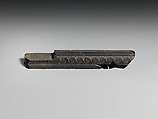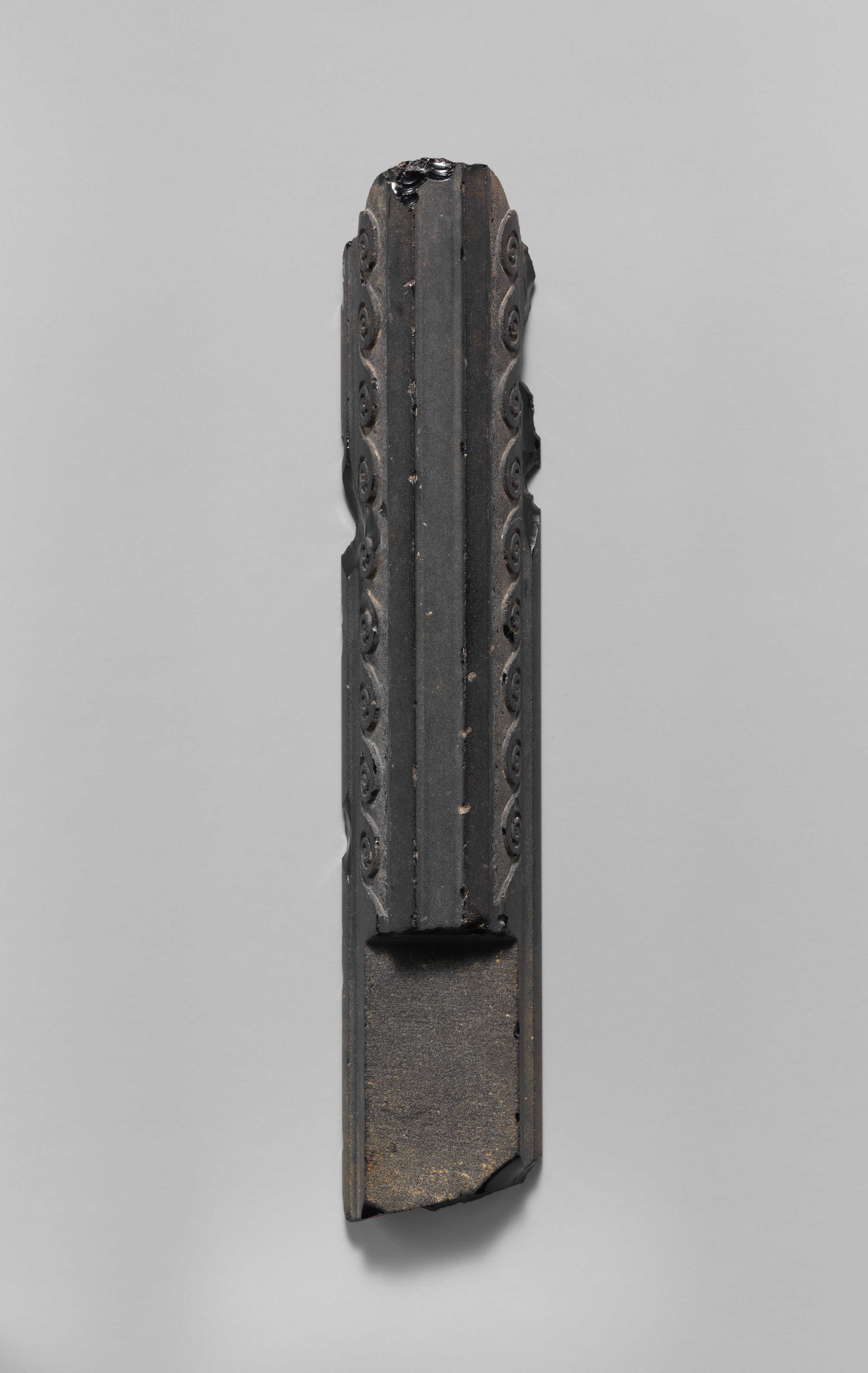Obsidian furniture attachment
Very deep purple, appearing black.
Solid block, with flat back; convex sides curving outward to flat, recessed band at front; top end cut back at angle sloping upward from back to front; bottom end carved back at front to a flat surface. On back, two slots as deep recesses, one of which is carved into the sloping top edge of the block; the other, located on the flat back towards the top, has a broad section at bottom leading to a narrower section above with flanges to hold an attachment pin.
Raised molding on edge between sides and bottom; on curving sides, symmetrical wave pattern comprising nine waves on each side carved in relief; above, two plain raised molding bands flanking frontal recessed surface.
Broken off at bottom and some chips and damage to top, sides, and back; unpolished mat surfaces, rougher in ground behind wave pattern, on flat cut in the front, and on back; small patches of limy accretion on back.
The slot on the back suggests that the piece was attached vertically, and the angled top with the other slot in the back implies it fitted together with a horizontal piece. The cutting on the lower front is unexplained but is original to the piece since the wave pattern only starts above it.
Obsidian was used in Hellenistic and Roman times for luxury vessels and composite statuary. This is a very rare example of its use as a decorative fitting, probably for a chair or couch.
Due to rights restrictions, this image cannot be enlarged, viewed at full screen, or downloaded.
This artwork is meant to be viewed from right to left. Scroll left to view more.



